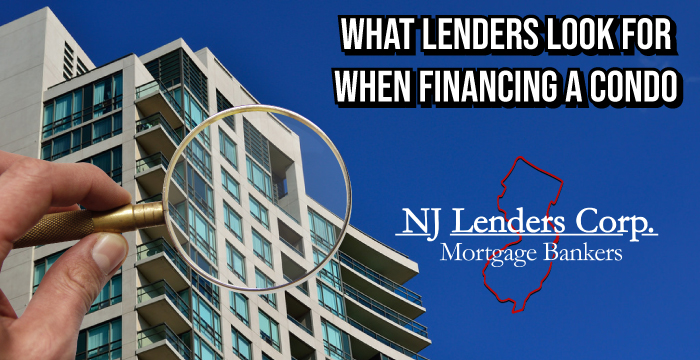
What Lenders Look For When Financing a Condo

Residential mortgage loans require the approval of both the applicant as well as the property. An applicant’s income, employment, credit history, assets, and other factors are reviewed when approving a loan application. At the same time, the lender reviews the collateral for the loan - the property. Loans are made to finance a single-family residence, a duplex, a 2-4 unit property, and it can be owner occupied, non-owner occupied, or a vacation or beach home. But, another property type that can obtain competitive financing is also a condominium unit. Here’s what lenders look for when financing a condo.
Both the individual unit and the condominium project must be approved. Before making an offer on a condo, first do some homework about the condominium’s management or Homeowner’s Association (HOA). If the HOA is involved in any current or pending litigation with the developer, the application process will come to a halt until the details of the lawsuit are reviewed. If there are no such suits, you can proceed to make your offer. You should also contact your lender directly to see if the project is currently approved, and if so, under what terms. If the project has been previously approved, it avoids the sometimes lengthy process of obtaining an approval.
If a single entity owns more than 20% of the number of units, it falls into a category called “unwarrantable.” That doesn’t mean you can’t obtain financing, but the terms for an unwarrantable condo can require higher rates and terms. In addition, lenders want to make sure that at least half the units are occupied by their owners for newly built projects. If there is any commercial space, it must be limited to 35% of the total square footage of the property. Also, the lender looks to see if there are any additional phases yet to be completed.
The lender discovers this information by issuing a HOA Questionnaire that the condo management must complete. In addition to the information requested, the condo must show there is sufficient insurance coverage both for the common areas, as well as liability insurance. Common areas within a condo are items such as a sidewalks, roads, recreational facilities such as a swimming pool, and workout facilities.
If a project is determined to be “warrantable” then conventional and government-backed programs can be used. If the project is outside the guidelines of a warrantable condo, financing can still be obtained, but by using a portfolio loan instead.